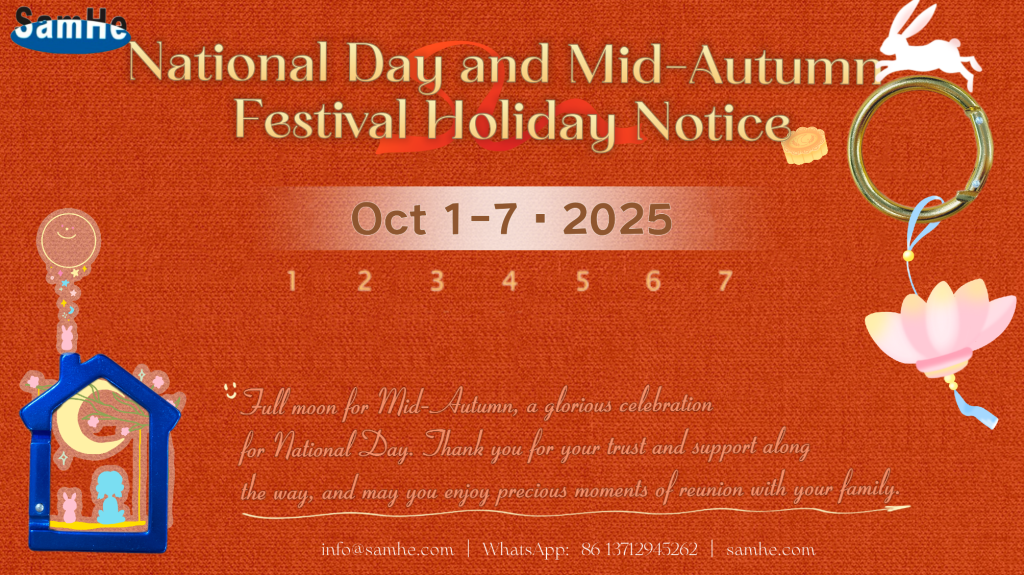National Day and Mid-Autumn Festival Holiday Notice
Happy Holidays · Family Reunion · Safe Journeys · New Opportunities
Our office and factory will be on holiday from Oct 1st to Oct 7th and will officially resume work on Oct 8th.
During the holiday period, we may reply a little slower than usual, but we will always do our best to stay connected. And, if you have any inquiries about our aluminum alloy carabiners and other buckles, please feel free to reach out to us:
info@samhe.com | WhatsApp: +86 13712945262
We sincerely wish you:
May the flowers bloom and the moon be full, and may your family be reunited. May your journey be smooth and full of joy. Happy Double Festival! And if you happen to be in China during the holiday, we’d love to share a cup of tea and enjoy the mooncakes.
—— The Samhe Team

The Mid-Autumn Festival is the second most important traditional festival in China after the Spring Festival.
It is celebrated on the 15th day of the 8th lunar month. A year is divided into four seasons: spring, summer, autumn, and winter, and according to traditional Chinese calendar, each season is further divided into three phases. The 8th lunar month is the second month in autumn, and the 15th day is in the middle of the month. That’s how the festival gets its name-the Mid-Autumn Festival.
The Mid-Autumn Festival originated from the ancient people’s worship of the moon. In the documents of the Western Han Dynasty, there are records of Chang’e flying to the moon and Wu Gang cutting down an osmanthus. The festival came into being in the song Dynasty and became important in the Ming and Qing dynasties.
Celebrations during the Mid-Autumn Festival are worshiping and appreciating the moon, eating mooncakes , enjoying osmanthus blossoms and drinking wine fermented with osmanthus flowers. all of which can date back to the ancient time. “Family reunion” is the theme of the Mid-Autumn Festival, during which the full moon means the full attendance of family members, and the mooncakes is a symbol of cherishing. Chinese culture has such a huge influence that the Mid-Autumn Festival has been introduced into countries in East and Southeast Asia, and is greatly treasured by overseas Chinese there.

